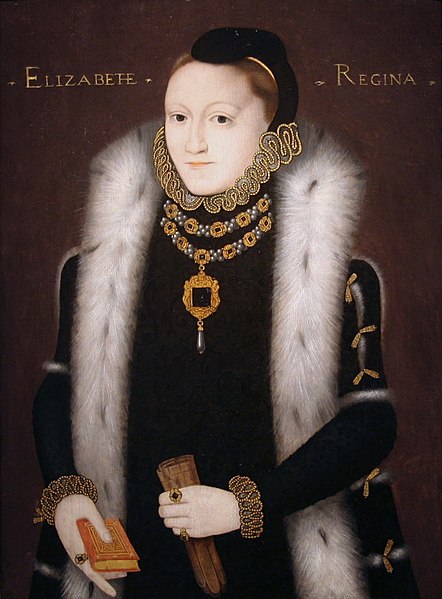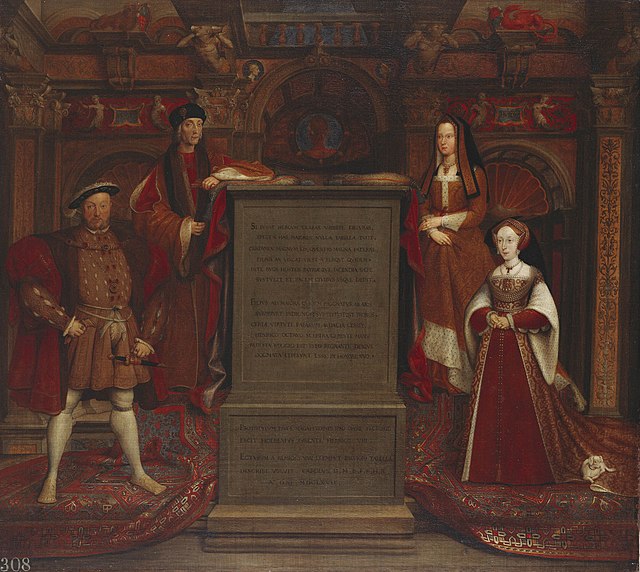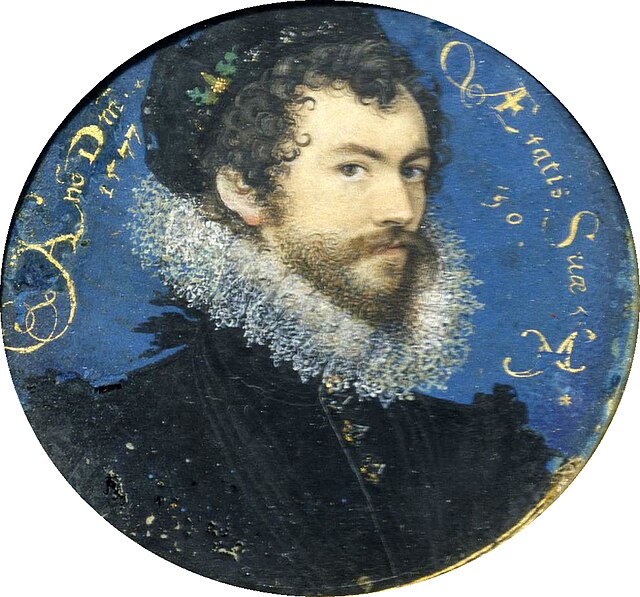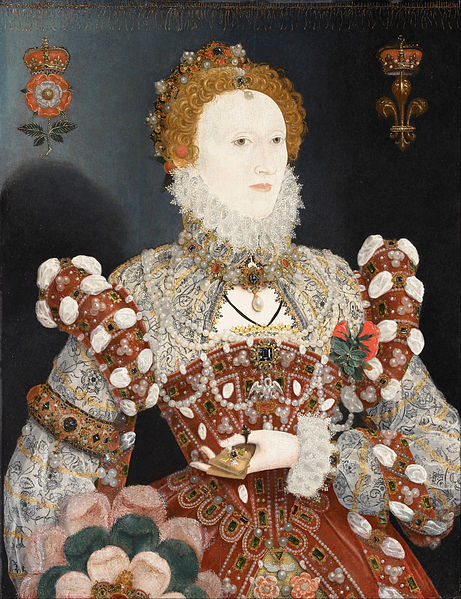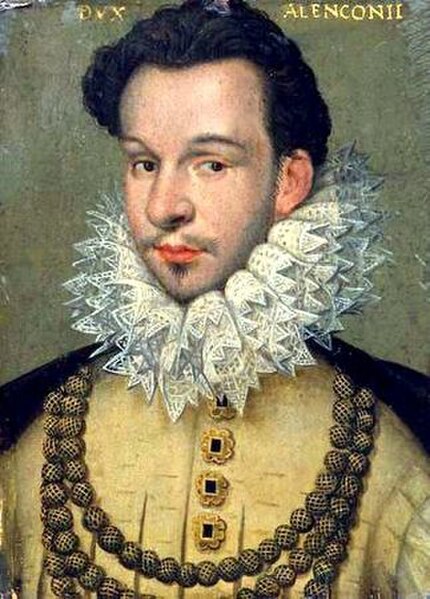Portraiture of Elizabeth I
The portraiture of Queen Elizabeth I (1533–1603) spans the evolution of English royal portraits in the early modern period (1400/1500-1800), from the earliest representations of simple likenesses to the later complex imagery used to convey the power and aspirations of the state, as well as of the monarch at its head.
Portrait of Elizabeth I of England in her coronation robes. Copy c. 1600–1610 of a lost original of c. 1559. The pose echoes the famous portrait of Richard II in Westminster Abbey, the second known portrait of a British sovereign.
One of many portraits of its type, with a reversed Darnley face pattern, c. 1585–90, artist unknown
Elizabeth "in blacke with a hoode and cornet", the Clopton Portrait, c. 1558–60
A copy of Holbein's Whitehall Mural.
Nicholas Hilliard was an English goldsmith and limner best known for his portrait miniatures of members of the courts of Elizabeth I and James I of England. He mostly painted small oval miniatures, but also some larger cabinet miniatures, up to about 10 inches tall, and at least two famous half-length panel portraits of Elizabeth. He enjoyed continuing success as an artist, and continuing financial troubles, for forty-five years. His paintings still exemplify the visual image of Elizabethan England, very different from that of most of Europe in the late sixteenth century. Technically he was very conservative by European standards, but his paintings are superbly executed and have a freshness and charm that has ensured his continuing reputation as "the central artistic figure of the Elizabethan age, the only English painter whose work reflects, in its delicate microcosm, the world of Shakespeare's earlier plays."
Self-portrait, 1577
Hilliard's wife Alice, an example of the influence from French art in his work. 1578
Elizabeth I, the "Pelican Portrait" c. 1572
Miniature of d'Alençon, 1577



